Para uno de los mejores libros sobre economía es "La Acción Humana" de Ludwig Von Mises.
Seguramente el libro más completo de economia y que todo economista tiene que haber leído al menos una vez en su vida.
Human Action: A Treatise on Economics
Paperback
by
Ludwig Von Mises
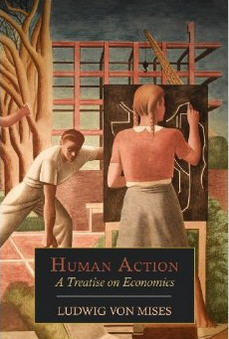
2012 Reprint of 1949 Edition. Exact facsimile of the original edition,
not reproduced with Optical Recognition Software. "Human Action: A
Treatise on Economics" is the first comprehensive treatise on economics
written by a leading member of the modern Austrian school of economics.
Von Mises contribution was very simple, yet at the same time extremely
profound: he pointed out that the whole economy is the result of what
individuals do. Individuals act, choose, cooperate, compete, and trade
with one another. In this way Mises explained how complex market
phenomena develop. Mises did not simply describe economic phenomena -
prices, wages, interest rates, money, monopoly and even the trade cycle -
he explained them as the outcomes of countless conscious, purposive
actions, choices, and preferences of individuals, each of whom was
trying as best as he or she could under the circumstances to attain
various wants and ends and to avoid undesired consequences. Hence the
title Mises chose for his economic treatise, "Human Action."
The Goal: A Process of Ongoing Improvement Paperback
by Eliyahu M. Goldratt

Revised third edition!
Alex Rogo is the manager of a failing manufacturing plant who receives
an ultimatum from corporate headquarters: Turn the situation around in
three months or the plant will be scrapped. With help from a mysterious
mentor, Rogo discovers a revolutionary new way to do business—a way for
people in any field of endeavor to increase productivity, profitability,
and personal fulfillment.
A business book disguised as a novel, a love story about the
manufacturing process, and an exhilarating adventure in human potential,
The Goal is changing how America does business. First published in
1984, it became an underground bestseller; today it's used by thousands
of companies and taught in hundreds of business schools. Includes the
author's personal story, "My Saga."
This third edition includes case study interviews. Professional readers
recreate interviews that David Whitford, Editor at Large with Fortune
Small Business, conducts with the author Eli Goldratt and with business
professionals from General Motors, Thomson-Shore, Security Federal Banks
and others who put the principles of The Goal into action.
The Effective Executive: The Definitive Guide to Getting the Right Things Done
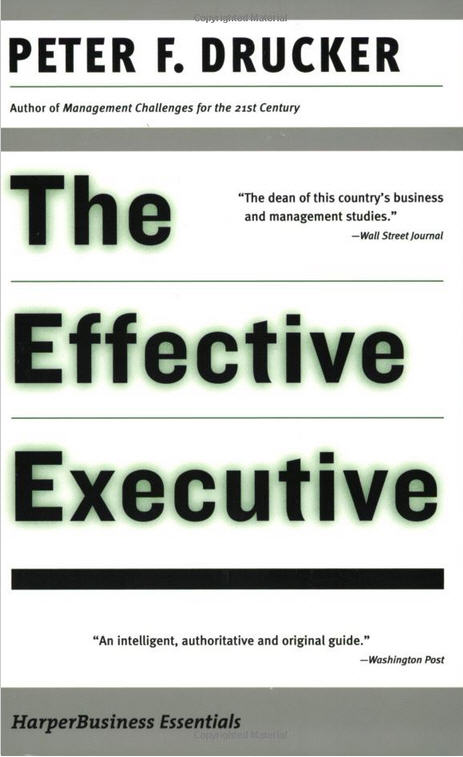
The measure of the executive, Peter F. Drucker reminds us, is the
ability to "get the right things done." This usually involves doing what
other people have overlooked as well as avoiding what is unproductive.
Intelligence, imagination, and knowledge may all be wasted in an
executive job without the acquired habits of mind that mold them into
results.
Drucker identifies five practices essential to business effectiveness that can, and must, be learned:
- Managing time
- Choosing what to contribute to the organization
- Knowing where and how to mobilize strength for best effect
- Setting the right priorities
- Knitting all of them together with effective decision-making
Ranging widely through the annals of business and government, Peter F. Drucker demonstrates the distinctive skill of the executive and offers fresh insights into old and seemingly obvious business situations.

An innovation classic. From Steve Jobs to Jeff Bezos, Clay
Christensen’s work continues to underpin today’s most innovative leaders
and organizations.
The bestselling classic on disruptive innovation, by renowned author Clayton M. Christensen.
His work is cited by the world’s best-known thought leaders, from Steve
Jobs to Malcolm Gladwell. In this classic bestseller—one of the most
influential business books of all time—innovation expert Clayton
Christensen shows how even the most outstanding companies can do
everything right—yet still lose market leadership.
Christensen explains why most companies miss out on new waves of
innovation. No matter the industry, he says, a successful company with
established products will get pushed aside unless managers know how and
when to abandon traditional business practices.
Offering both successes and failures from leading companies as a guide,
The Innovator’s Dilemma gives you a set of rules for capitalizing on the
phenomenon of disruptive innovation.
Sharp, cogent, and provocative—and consistently noted as one of the most
valuable business ideas of all time—The Innovator’s Dilemma is the book
no manager, leader, or entrepreneur should be without.
by Ralph Nelson Elliott
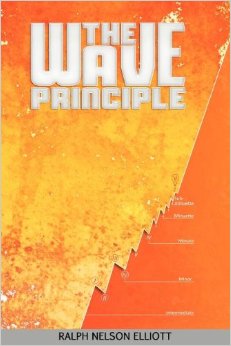
The Elliott Wave Principle is a form of technical analysis that some
traders use to analyze financial market cycles and forecast market
trends by identifying extremes in investor psychology, highs and lows in
prices, and other collective factors. Ralph Nelson Elliott, a
professional accountant, discovered the underlying social principles and
developed the analytical tools. He proposed that market prices unfold
in specific patterns, which practitioners today call Elliott waves, or
simply waves. Elliott published his theory of market behavior in this
book "The Wave Principle". Elliott stated that "because man is subject
to rhythmical procedure, calculations having to do with his activities
can be projected far into the future with a justification and certainty
heretofore unattainable."
Forum on trading, automated trading systems and testing trading strategies
Discussion of article "The Implementation of Automatic Analysis of the Elliott Waves in MQL5"
newdigital, 2014.03.13 09:39
Keys to Investor Success - Elliott Wave Theory (based on thetechnicaltraders article)
Elliott Wave Theory - Plenty of people will freely offer you
advice on how to spend or invest your money. “Buy low and sell high,”
they’ll tell you, “that’s really all there is to it!” And while there is
a core truth to the statement, the real secret is in knowing how to
spot the highs and lows, and thus, when to do your buying and selling.
Sadly, that’s the part of the equation that most of the advice givers
you’ll run across are content to leave you in the dark about.
The reality is that no matter how many times you are told differently,
there is no ‘magic bullet.’ There is no plan, no series of steps you can
follow that will, with absolute certainty, bring you wealth. If you
happen across anyone who says otherwise, you can rely on the fact that
he or she has an agenda, and that at least part of that agenda involves
convincing you to open your wallet.
In the place of a surefire way to make profits, what is there? Where can
you turn, and what kinds of things should you be looking for?
The answers to those questions aren’t as glamorous sounding as the
promises made by those who just want to take your money, but they are
much more effective. Things like careful, meticulous research. Market
trend analysis. Paying close attention to extrinsic factors that could
impact whatever industry you’re planning to invest in, and of course,
Elliott wave theory. If you’ve never heard of the Elliott wave, you owe
it to yourself to learn more about it.
Postulated by Ralph Nelson Elliott in the late 1930’s, it is essentially
a psychological approach to investing that identifies specific stimuli
that large groups tend to respond to in the same way. By identifying
these stimuli, it then becomes possible to predict which direction the
market will likely move, and as he outlined in his book “The Wave
Principle,” market prices tend to unfold in specific patterns or
‘waves.’
The fact that many of the most successful Wall Street investors and portfolio managers use this type of trend analysis in their own decision making process should be compelling evidence that you should consider doing the same. No, it’s not perfect, and it is certainly not a guarantee, but it provides a strong framework of probability that, when combined with other research and analysis, can lead to consistently good decisions, and at the end of the day, that’s what investing is all about. Consistently good decision making.
We can use Elliott Wave Theory in real time by looking at the larger patterns of the SP 500 index for example. We can deploy Fibonacci math analysis to prior up and down legs in the markets to determine where we are in an Elliott Wave pattern. This will help us decide if to be aggressive when the markets correct, go short the market, or to do nothing for example. It also prevents from making panic type decisions, whether that be in chasing a hot stock too higher or selling something too low before a reversal. We also can use Elliott Wave Theory to determine when to be aggressive in selling or buying, on either side of a trade.
For many, its not practical to employ Elliott Wave analysis with
individual stocks and trading, but it can be done with experience.
Knowing when to enter and exit a position whether your time frame is
short, intermediate, or longer… can often be identified with good
Elliott Wave Theory practices. Your results and your portfolio will
appreciate it
Forum on trading, automated trading systems and testing trading strategies
Book: Algorithmic Trading and DMA: An introduction to direct access trading strategies
MetaQuotes, 2014.01.12 18:40
http://www.amazon.com/Algorithmic-Trading-DMA-introduction-strategies/dp/0956399207
Algorithmic trading and Direct Market Access (DMA) are important tools helping both buy and sell-side traders to achieve best execution.
This book starts from the ground up to provide detailed explanations of both these techniques:
- An introduction to the different types of execution is followed by a review of market microstructure theory. Throughout the book examples from empirical studies bridge the gap between the theory and practice of trading.
- Orders are the fundamental building blocks for any strategy. Market, limit, stop, hidden, iceberg, peg, routed and immediate-or-cancel orders are all described with illustrated examples.
- Trading algorithms are explained and compared using charts to show potential trading patterns. TWAP, VWAP, Percent of Volume, Minimal Impact, Implementation Shortfall, Adaptive Shortfall, Market On Close and Pairs trading algorithms are all covered, together with common variations.
- Transaction costs can have a significant effect on investment returns. An in-depth example shows how these may be broken down into constituents such as market impact, timing risk, spread and opportunity cost and other fees.
- Coverage includes all the major asset classes, from equities to fixed income, foreign exchange and derivatives. Detailed overviews for each of the world's major markets are provided in the appendices.
- Order placement and execution tactics are covered in more detail, as well as potential enhancements (such as short-term forecasts), for those interested in the specifics of implementing these strategies.
- Cutting edge applications such as portfolio and multi-asset trading are also considered, as are handling news and data mining/artificial intelligence.
Algorithmic Trading: Winning Strategies and Their Rationale

Praise for Algorithmic Trading
"Algorithmic Trading is an insightful book on quantitative trading
written by a seasoned practitioner. What sets this book apart from many
others in the space is the emphasis on real examples as opposed to
just theory. Concepts are not only described, they are brought to life
with actual trading strategies, which give the reader insight into how
and why each strategy was developed, how it was implemented, and even
how it was coded. This book is a valuable resource for anyone looking
to create their own systematic trading strategies and those involved in
manager selection, where the knowledge contained in this book will
lead to a more informed and nuanced conversation with managers."
- DAREN SMITH, CFA, CAIA, FSA, Managing Director, Manager Selection
& Portfolio Construction, University of Toronto Asset Management
"Using an excellent selection of mean reversion and momentum
strategies, Ernie explains the rationale behind each one, shows how to
test it, how to improve it, and discusses implementation issues. His
book is a careful, detailed exposition of the scientific method applied
to strategy development. For serious retail traders, I know of no
other book that provides this range of examples and level of detail.
His discussions of how regime changes affect strategies, and of risk
management, are invaluable bonuses."
- Roger Hunter, Mathematician and Algorithmic Trader
Technical Analysis Explained Fifth Edition : Martin Pring
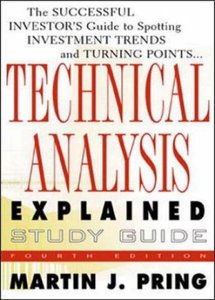
The face of investing has significantly changed in the 30 years since
this book's first publication, but one essential component of the
markets has not--human behavior. Whether you're trading cornerstone
commodities or innovative investment products, observing how investors
responded to past events through technical analysis is your key to
forecasting when to buy and sell in the future. This fully updated fifth
edition shows you how to maximize your profits in today's complex
markets by tailoring your application of this powerful tool.
Tens of thousands of individual and professional investors have used the
guidance in this book to grow their wealth by understanding,
interpreting, and forecasting significant moves in both individual
stocks and entire markets. This new edition streamlines its
time-honored, profit-driven approach, while updating every chapter with
new examples, tables, charts, and comments that reflect the real-world
situations you encounter in everyday trading. Required reading among
many professionals, this authoritative resource now features:
- Brand-new chapters that analyze and explain secular trends with unique technical indicators that measure investor confidence, as well as an introduction to Pring's new Special K indicator
- Expanded coverage on the profit-making opportunities ETFs create in international markets, sectors, and commodities
- Practical advice for avoiding false, contratrend signals that may arise in short-term time spans
- Additional material on price patterns, candlestick charts, relative strength, momentum, sentiment indicators, and global stock markets
Properly reading and balancing the variety of indicators used in
technical analysis is an art, and no other book better illustrates the
repeatable steps you need to take to master it.
When used with patience and discipline, Technical Analysis Explained,
Fifth Edition, will make you a better decision maker and increase your
chances of greater profits.
The Little Book Of Trading : Michael W. Covel
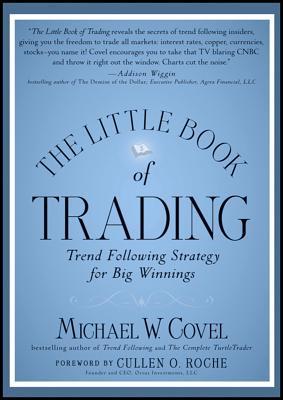
The last decade has left people terrified of even the safest investment
opportunities. This fear is not helping would-be investors who could be
making money if they had a solid plan. The Little Book of Trading
teaches the average person rules and philosophies that winners use to
beat the market, regardless of the financial climate.
The market has always fluctuated, but savvy traders know how to make
money in good times and bad. Drawing on author Michael Covel's own
trading experience, as well as insights from legendary traders, the book
offers sound, practical advice in an easy to understand, readily
digestible way. The Little Book of Trading:
Identifies tools, concepts, psychologies, and philosophies that keep
people protected and making money when the next market bubble or
surprise crisis occurs
Features top traders in each chapter that have beaten the market for
decades, providing readers with their moneymaking knowledge
Shows how traders who beat mutual fund performance make money at different times, not just from stocks alone
Most importantly, The Little Book of Trading explains why mutual funds
should not be the investment vehicle of choice for people looking to
secure retirement, a radical realization highlighting the changed face
of investing today.
- Free trading apps
- Over 8,000 signals for copying
- Economic news for exploring financial markets
You agree to website policy and terms of use
This is the thread about books related for stocks, forex, financial market and economics. Please make a post about books with possible cover image, short description and official link to buy (amazon for example).
Posts without books' presentation, without official link to buy and with refferal links will be deleted.Posts with links to unofficial resellers will be deleted.